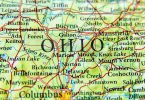Social media channels are finally making an effort to meet brands halfway. Not only are they providing brands with a platform to position themselves as they see fit, but now more social networks are offering tools designed to help brands tell a better story. New features on Facebook, Twitter, and LinkedIn were created with brands in mind. There are limitless options for how brands will optimize their social media presence as they integrate these new tools into their social media rituals.
PRSA’s “Friday Five” post — an analysis of the week’s biggest PR and business news and commentary — explores how new brand tailored social media tools will help brands expand their network of influencers and offer better brand engagement.
Four Reasons PR Pros Will Love Facebook Timeline for Brands (mediabistro)
This week, Facebook announced at a conference in New York that it will begin rolling out its Timeline feature for brands. Timeline, essentially a “story of your life” in a linear narrative, reorganizes Facebook posts into cohesive content flow, punctuated with notable achievements and significant events. In efforts to ease the transition for brands, PRNewser published a guest post by Jared Degnan, social media and digital manager of Brandware Public Relations, who provides four ways for PR pros to optimize their clients’ social media presence.
- Establish history and heritage. Mark important moments in your client’s corporate history, from founding through expansion through IPO or other significant mile markers.
- Signal expansion and growth. Now brands can celebrate new hires much like consumers tag people to mark a relationship.
- Share awards and accolades. Timeline lets PR professionals publicize client awards in the context of brand history.
- Build enthusiast community. PR professionals will be able to create applications that share brand passion with customers and prospects via existing enthusiasts.
Beyond the ‘Like’: How Social Media Is Growing Up for Brands (Crain’s Chicago Business)
Social media is growing up and extending itself more toward brands than ever. Some of the major players adjusting their platforms to better meet brand needs include Facebook, Twitter, Google+ and LinkedIn. For starters Facebook is rolling out their Timeline design for brands. Come March 30, this will be a mandatory transformation for all brand pages. Facebook also realized that the old familiar “Like” button isn’t always accurate in terms of an actual endorsement of that post. Facebook’s plan is to create a Facebook Gestures feature, that will offer more descriptive buttons that do not necessarily imply endorsement, such as if they “Watched” a video or “Listened” to a song. This development may finally lead to a “Dislike” button, too. Twitter is also rolling out Twitter pages for brands to a wider audience — so brands will be able to more heavily customize their profile page’s headers to display logos and other visuals. Finally, LinkedIn announced that brands will soon be able to embed a “Follow Company” button on their website’s home page that enables visitors to get updates from that company in their LinkedIn stream. With more mature social media channels, it seems brands have more opportunity to tailor their engagement strategies.
How Brands Can Use Pinterest Without Breaking the Law (Ad Age Digital)
Pinterest is the hot new item in social media. Pinterest offers users the ability to organize images on a virtual pinboard. In practice, users can “pin” images from other’s websites to their Pinterest page (or “pinboard”) which are then visible to and can be “re-pinned” by other Pinterest users (like a “re-tweet” or a “share” on Facebook). The pins use whole images (not just thumbnails) and link the viewer back to the original source of the image. Pinterest, however, poses risk of copyright infringement. So how can brands benefit from the use of Pinterest without having to walk a legal tight rope? Ad Age Digital’s Brian Heidelberger walks us through how to limit liability, copyright concerns, requests for permission, and unique promotion issues.
Related: How Companies Can Effectively Respond to the Siren Call of Pinterest (PRSAY)
Hanging Out on Google+: the Opportunities for Brands (iMedia Connection)
So who’s hanging out on Google+? David Beckham, the Muppets, and even President Barack Obama, just to name a few. If celebs can do it, then so can your brand. Here are a few ways that brands can benefit from hanging out on Google+:
- Sharing or presenting information. Screensharing was part of the bundle of ‘extras’ that Google+ launched earlier this year, and lets everyone in a hangout see what’s on your computer screen.
- Market research. Google+ integration with YouTube lets G+ users watch YouTube videos together. This could be a great way for qualitative research to be conducted, letting customers discuss and choose new product lines, logos, or marketing campaigns.
- Mentoring, training, and leadership initiatives. Agency BCM launched an ‘Agency Hangout’ where its staff could take questions from advertising students on anything relating to advertising or agency life. Ghetto Film School is using hangouts to host monthly masterclasses for aspiring and established film makers to talk to acclaimed film makers.
However, Google+, like every other social network, is not without issues. Google+ lacks moderator controls, which gives uninvited individuals the ability to disrupt a hangout. For brands this is the most unattractive feature of Google+ hangouts. As Google introduces moderator controls, brands may feel better about integrating Google+ hangouts into their social media planning.
Why Can’t Facebook and Twitter Say the A-word? (Reuters)
Among all the tools being offered to brands to optimize their social media use, advertising via social media channels is yet another that will allow big brand marketers to push information directly into users’ newsfeeds and onto other prominent on-screen real-estate. However, Facebook and Twitter are getting a lot of flak for even incorporating advertising into the basic package of what they offer users. Twitter started the trend when it rolled out its advertising products in 2010, which it dubbed “promoted Tweets.” Instead of using the word advertisement, Facebook has elected to call them “stories.” Regardless of the terminology, this new initiative is very telling of social media as a business, and there’s no way to tell which social network is next to walk the plank into a sea of promoted storytelling.
Nicole Castro is the public relations associate at the Public Relations Society of America.







[…] Nicole Castro points out the benefits that brands are seeing from social media tools http://bit.ly/Hh8kRS. Twitter is expanding the reach of its brand pages and offering more customization of profile page […]